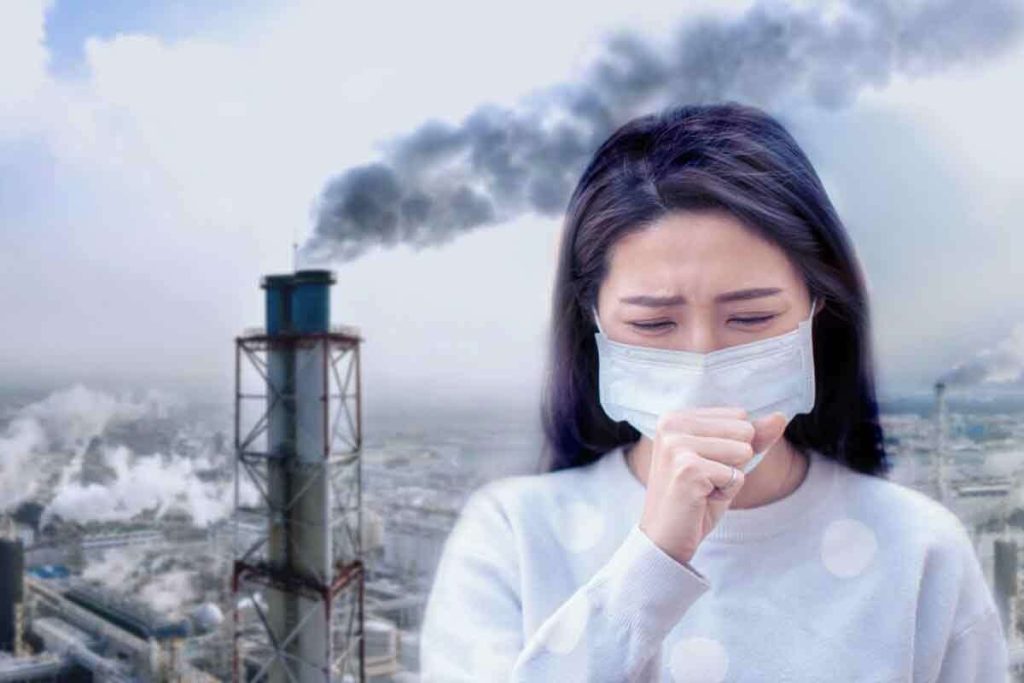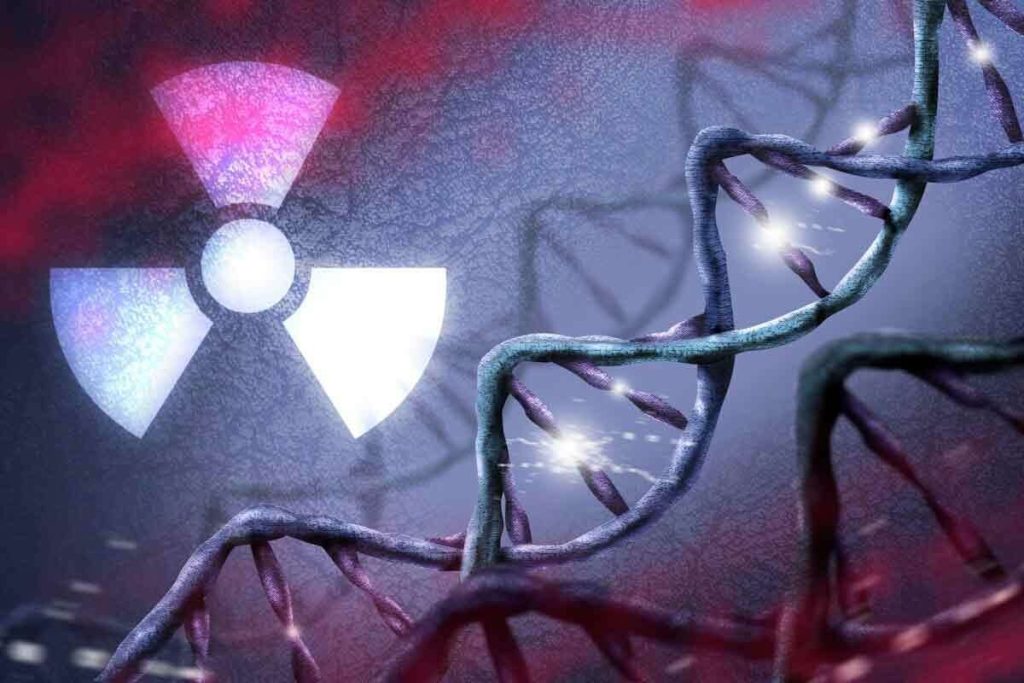
What Does Radiation Do to Humans?
At Liv Hospital, we understand the dangers of radiation and its impact on health. Exposure to radiation can lead to serious health problems, including damage to rapidly growing cells and an increased risk of cancer.
So, what does radiation do to humans exactly? Its effects depend on the amount and duration of exposure. High doses can cause immediate harm, while long-term exposure may lead to chronic health issues.
At Liv Hospital, we aim to provide world-class healthcare and raise awareness about the health effects of radiation. By understanding these risks, people can take steps to protect themselves and make informed choices about their health.

To understand the dangers of radiation, we must first know what it is. It’s a form of energy that comes from many sources. We find it everywhere, even inside our bodies.
Radiation is divided into two main types: ionizing and non-ionizing radiation. Ionizing radiation can remove electrons from atoms, creating ions. This includes X-rays, gamma rays, and some UV radiation. It’s dangerous because it can damage DNA and raise cancer risks (Source: US EPA).
Non-ionizing radiation, on the other hand, has less energy. It can make atoms vibrate or rotate. Examples are radio waves, microwaves, and low-frequency electromagnetic fields.
We face radiation every day from different sources. Natural sources include cosmic radiation and radon gas from the earth.
Man-made sources include medical radiation from X-rays and CT scans. Also, products like smoke detectors and building materials can emit radiation.
We measure radiation in sieverts (Sv) or millisieverts (mSv). A chest X-ray gives about 0.1 mSv.
The average natural background radiation is 2.4 mSv a year. Levels over 100 mSv can be risky. More than 1 Sv can lead to acute radiation syndrome (ARS).
| Radiation Exposure Level (mSv) | Health Risk |
| 0.1 | Typical dose from a chest X-ray |
| 2.4 | Average annual natural background radiation |
| 100 | Significant health risks begin |
| 1000 | Potentially leads to Acute Radiation Syndrome (ARS) |
“Understanding radiation exposure is key to knowing the risks. It helps us take the right safety steps.”
” US Environmental Protection Agency

Radiation exposure harms human health by damaging cells and DNA. When it enters the body, it can harm cells deeply. This can lead to many health problems.
Radiation can go through human tissue to different depths. This depends on its type and energy. Ionizing radiation, in particular, can remove electrons from atoms, creating ions. This can damage DNA in cells, causing cell death or mutations.
When radiation damages DNA, it can cause mutations. These mutations may lead to cancer or other health issues. Cells have ways to fix DNA damage, but these methods are not perfect. If damage is not fixed, it can lead to mutations.
Research shows that radiation-induced DNA damage is a big concern. It can cause long-term health effects (Source: PMC).
Radiation is very harmful to cells that divide quickly. These cells are in places like bone marrow, the gastrointestinal system, and hair follicles. Because they divide often, they are more vulnerable to radiation damage.
This damage can cause acute radiation syndrome (ARS). ARS is a severe condition that damages tissues and organs.
| Cell Type | Division Rate | Sensitivity to Radiation |
| Bone Marrow Cells | High | High |
| Gastrointestinal Cells | High | High |
| Nerve Cells | Low | Low |
High doses of radiation can cause Acute Radiation Syndrome, a serious condition. This syndrome happens when the body gets too much radiation quickly. It damages the bone marrow, lungs, and other important organs.
ARS symptoms depend on the radiation dose. Common signs include nausea, vomiting, diarrhea, fatigue, and damage to the bone marrow, lungs, and gastrointestinal system. ARS goes through three stages: prodromal, latent, and manifest illness.
ARS severity and survival chances depend on the radiation dose. Higher doses mean worse symptoms and lower survival rates. Doses over 2 Gy can be deadly.
| Dose (Gy) | Symptoms | Survival Rate |
| 0-1 | Mild symptoms, if any | High |
| 1-2 | Moderate symptoms | Moderate |
| 2-4 | Severe symptoms | Low |
| >4 | Very severe symptoms, often fatal | Very Low |
The Chernobyl and Fukushima nuclear disasters show the dangers of high radiation. At Chernobyl in 1986, a big explosion released a lot of radioactive material. This caused ARS in workers and nearby people. Fukushima Daiichi in 2011 also had a big radiation release, affecting workers and locals.
These events show how critical it is to understand and reduce radiation risks. By learning from these disasters, we can better prepare for and handle future radiation emergencies.
Radiation exposure can severely harm the human body. It affects many parts of our body. We will look at the main health problems caused by radiation.
Radiation can harm the bone marrow, leading to blood problems. It can stop the bone marrow from making blood cells. This might cause anemia, neutropenia, and thrombocytopenia.
The US EPA says radiation can weaken the bone marrow. This can lower blood cell counts. This makes it harder for the body to fight off infections and stop bleeding.
| Condition | Description | Radiation Dose |
| Anemia | Low red blood cell count | 2-4 Gy |
| Neutropenia | Low white blood cell count | 1-3 Gy |
| Thrombocytopenia | Low platelet count | 1-2 Gy |
Radiation can hurt the gut, causing digestive problems. It can damage the gut lining, leading to nausea, vomiting, diarrhea, and stomach pain.
The damage to the gut depends on how much and for how long you’re exposed to radiation. High doses can cause severe symptoms.
“Radiation exposure can cause significant damage to the gastrointestinal system, leading to nausea, vomiting, and diarrhea.”
US EPA
High doses of radiation can burn the skin and cause tissue death. It can damage the skin, causing burns, blisters, and ulcers.
Radiation can also harm the brain and nervous system. High doses can cause seizures, confusion, and even death.
The risk of brain damage depends on the dose and how long you’re exposed. We will look at more health impacts of radiation in the next sections.
Radiation-induced cancer is a big health worry. It can lead to many types of cancers. We’ll look at how radiation causes cancer, the most common cancers it leads to, and the time it takes for cancer to develop.
Radiation can cause cancer in several ways. Ionizing radiation can damage DNA in cells. This damage can lead to mutations that may cause cancer.
The process of radiation-induced carcinogenesis is complex. It involves radiation, DNA damage, and the body’s repair mechanisms. Sometimes, the body can’t fix DNA damage perfectly, leading to mutations that can cause cancer.
Some cancers are more likely to be caused by radiation. These include leukemia, thyroid cancer, breast cancer, and lung cancer. The risk depends on the dose and duration of radiation, as well as individual factors.
| Cancer Type | Latency Period | Risk Factors |
| Leukemia | 2-5 years | High dose radiation exposure |
| Thyroid Cancer | 5-10 years | Exposure at a young age, specially in childhood |
| Breast Cancer | 10+ years | Exposure during adolescence and early adulthood |
| Lung Cancer | 10+ years | High dose radiation, smoking |
The time it takes for cancer to develop after radiation exposure varies. It can be a few years or several decades. Knowing these time frames helps us understand the lifetime cancer risk from radiation.
The Centers for Disease Control and Prevention says radiation exposure is a big cancer risk. They offer guidelines and info on radiation’s health effects to help reduce these risks.
We need to understand how radiation, individual factors, and the environment affect cancer risk. By knowing these, we can work to lower the risks from radiation exposure.
It’s important to know how radiation affects reproductive health. This knowledge helps us reduce its harmful effects. Radiation can impact fertility, fetal growth, and even future generations.
Radiation can harm fertility in both men and women. High doses can damage the testes in men, affecting sperm. This might lead to infertility. Women might face ovarian failure, causing early menopause. Also, radiation can cause genetic damage, raising the chance of mutations in offspring.
Key effects on fertility include:
Radiation during pregnancy can harm the fetus. The fetus is most vulnerable early in pregnancy. It can lead to growth issues, birth defects, and miscarriage.
| Stage of Pregnancy | Potential Effects of Radiation |
| Early Pregnancy | Miscarriage, Congenital Malformations |
| Late Pregnancy | Growth Restriction, Developmental Delays |
Radiation can have lasting effects on future generations. Studies show it can cause genetic damage passed down. This increases the risk of cancer, birth defects, and other health problems in the next generation.
“The health effects of radiation exposure can extend beyond the individual to affect future generations, highlighting the need for stringent radiation protection measures.”
” International Commission on Radiological Protection
Radiation poses big risks to reproductive health and fetal development. Knowing these dangers is key to finding ways to protect against them.
We look at the health problems caused by long-term radiation exposure. Prolonged radiation can harm many parts of the body.
Long-term radiation can cause lung problems like pulmonary fibrosis. This makes it hard to breathe. It often happens when radiation targets the chest.
Symptoms of pulmonary fibrosis include: shortness of breath, a dry cough, and feeling very tired. In bad cases, it can cause serious breathing problems.
Radiation can increase the risk of heart disease. It damages blood vessels, causing plaque buildup. This can lead to heart attacks or strokes.
Cardiovascular risks associated with radiation include: high blood pressure, heart disease, and heart scarring.
Long-term radiation can weaken the immune system. This makes it easier to get sick. It damages the bone marrow, where immune cells are made.
Radiation can also harm the eyes, causing cataracts. This clouds the lens and affects vision. Other eye problems include retinal damage and vision loss.
| Health Effect | Description | Symptoms |
| Pulmonary Fibrosis | Scarring of lung tissue | Shortness of breath, dry cough, fatigue |
| Cardiovascular Disease | Damage to blood vessels, accelerated atherosclerosis | Hypertension, coronary artery disease, cardiac fibrosis |
| Immune System Dysfunction | Impaired immune response | Increased susceptibility to infections |
| Cataracts | Clouding of the lens in the eye | Vision impairment, blindness |
Radiation protection is a complex field that includes medical treatments and safety steps. We’ve talked about the dangers of radiation and how to fight them with medical help and safety rules.
There are several ways to treat radiation exposure. First, we must clean the affected area to stop more harm. We also use special medicines to fight radiation’s effects.
These medicines help with symptoms like bone marrow problems. We choose treatments based on how much radiation someone got. This can be simple care or more serious steps like stem cell transplants.
Radiation safety has three main rules: time, distance, and shielding. Shortening exposure time and moving further away from radiation sources helps a lot. Shields, like lead, block radiation too.
Using these methods, we can lower radiation risks in many places. This includes hospitals and work areas where people might be exposed.
Protecting workers from radiation is key. We monitor their exposure and give them protective gear. Medical guidelines make sure radiation used in treatments is safe and needed.
We follow strict rules to keep workers and patients safe. This includes training and using safer imaging options when we can.
Understanding and managing radiation risks is key in today’s world. We’ve looked at different types of radiation and how they affect us. This includes the risk of cancer and problems with reproduction.
Liv Hospital is dedicated to top-notch healthcare and spreading the word about radiation dangers. Knowing about radiation risks and how to avoid them is important. The US EPA says being aware and taking steps can lessen health problems from radiation.
To handle radiation risks, we need to know where they come from and how to avoid them. This means following safety rules and being careful about radiation in work and medicine. It’s all about time, distance, and shielding.
Together, we can make our lives safer from radiation. We should all be more aware and take steps to protect ourselves. If you’ve been exposed to radiation, don’t hesitate to get medical help.
Radiation is a form of energy that can harm human tissue. It can damage DNA and cause health problems. High levels of radiation can lead to serious health issues, including cancer.
There are two main types of radiation. Ionizing radiation, like X-rays, can damage DNA and increase cancer risk. Non-ionizing radiation, such as radio waves, can cause heating but is less harmful.
We are exposed to radiation from many sources. Medical imaging, nuclear power plants, and radon gas in homes are common sources. We also get background radiation from the earth and sun.
Radiation is measured in sieverts (Sv) and grays (Gy). The average annual exposure is about 2.4 millisieverts (mSv). Exposure to 1-2 Sv can cause sickness, and doses above 4 Sv can be fatal.
ARS symptoms include nausea, vomiting, and fatigue. It also affects the bone marrow, lungs, and digestive system. The severity depends on the dose and duration of exposure.
Yes, radiation can increase cancer risk. Ionizing radiation damages DNA, leading to mutations and cancer. The risk depends on the dose, duration, and individual factors like age and genetics.
Radiation can harm fertility, cause genetic damage, and affect pregnancy and fetal development. High doses can lead to miscarriage, birth defects, and developmental problems. It can also affect future generations.
To reduce radiation exposure, follow safety guidelines. Use shielding, maintain distance from sources, and limit exposure time. Medical professionals should also minimize radiation during procedures.
Long-term effects include respiratory conditions, cardiovascular disease, and immune system dysfunction. Prolonged exposure to low levels can increase cancer risk and other health problems.
Treatments include decontamination, medication, and supportive care. In severe cases, bone marrow transplantation may be needed. Radiation safety measures can also prevent exposure.
Radiation harms rapidly dividing cells because it can damage DNA and disrupt cell division. This can lead to cell death, mutations, and cancer risk. Cells in the bone marrow and digestive system are most vulnerable.
Radiation-induced carcinogenesis is when radiation exposure leads to cancer. Ionizing radiation causes DNA damage and mutations, increasing cancer risk. The risk depends on the dose, duration, age, and genetics.
World Health Organization (WHO). (2023). Radiation and health. https://www.who.int/news-room/questions-and-answers/item/radiation-and-health
Subscribe to our e-newsletter to stay informed about the latest innovations in the world of health and exclusive offers!
WhatsApp us